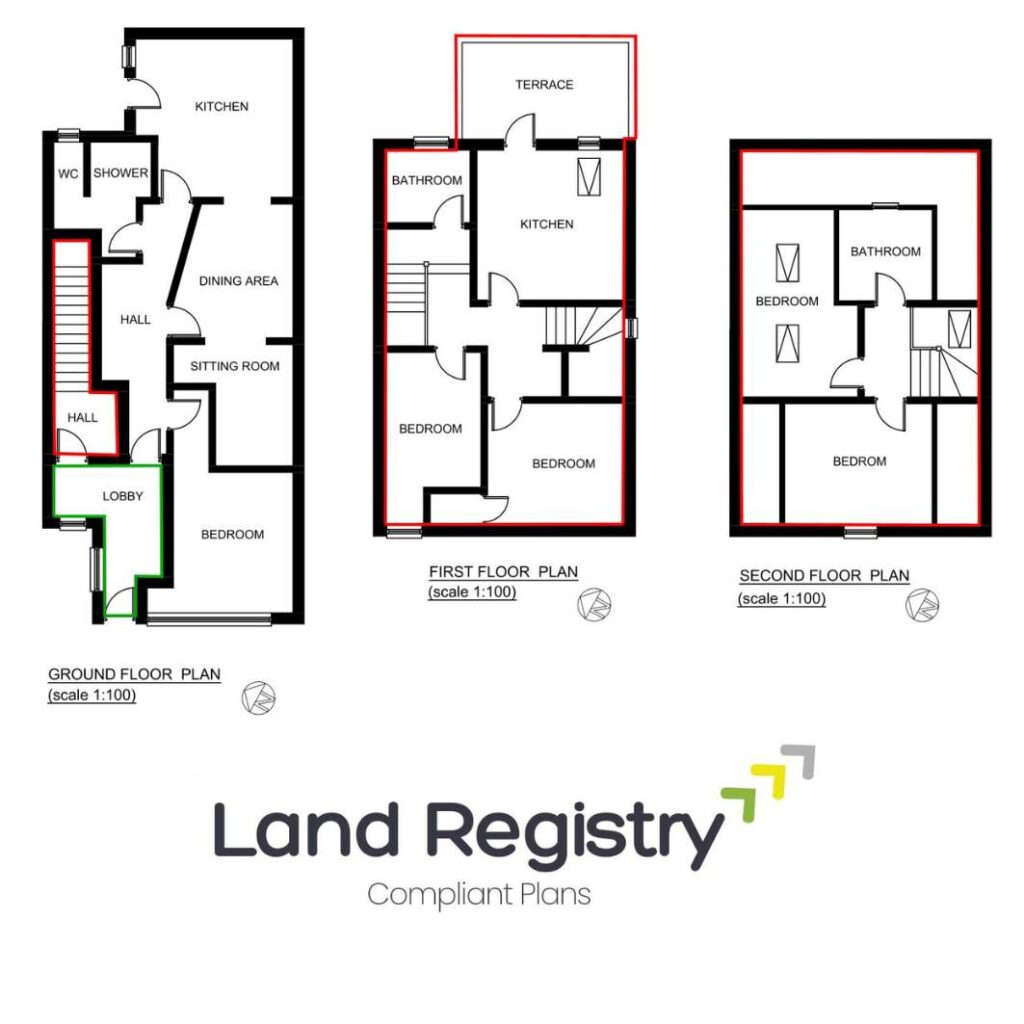The Land Registry Hub: Your Go-To Guide for Property Plans & Conveyancing
🛠️ Navigating the world of Land Registry, lease plans, title plans, and conveyancing can feel like a legal maze—but don’t worry, we’ve got you covered! Whether you’re a property owner, landlord, solicitor, or just someone trying to make sense of UK property rules, this blog is your one-stop resource for clear, practical advice.
From understanding lease plans to avoiding common conveyancing pitfalls, we break it all down in a way that’s easy to follow. Stay tuned for expert insights, tips, and updates to keep you ahead in the property game! 🏡📜✨

Land Registry Compliant Plans
What is a Land Registry Lease Plan and Why Do You Need One?
Alright, so you’re in the middle of a property deal—maybe you’re renting out a flat, buying a leasehold property, or splitting up a building into multiple units. At some point, someone (probably your solicitor or the Land Registry) will mention a lease plan.
If you’ve never dealt with one before, don’t worry—you’re not alone! A Land Registry lease plan is one of those legal documents that people don’t think about until they absolutely have to. But it’s actually a big deal when it comes to leases of seven years or more, and getting it right is crucial.
So, let’s break it all down. What exactly is a Land Registry lease plan, when do you need one, and what happens if you don’t have it?
What is a Land Registry Lease Plan?
A lease plan is basically a detailed map that shows the exact area of a property being leased, including any shared spaces or rights of access. It’s not just a quick sketch—this needs to be a properly scaled, accurate, and professionally drawn plan that meets the HM Land Registry’s requirements.
Think of it like this: If you’re renting a flat in a building, the lease plan is the official way of showing which part is yours and which bits belong to other people (or are communal). Without this, things can get messy pretty quickly—especially if there’s a disagreement down the line about who owns what.
When Do You Need a Lease Plan?
There are a few key situations where you must have a lease plan:
If you’re granting a new lease for seven years or more
- By law, any lease over seven years must be registered with HM Land Registry, and part of that registration includes a compliant lease plan.
If you’re selling a leasehold property that isn’t registered yet
- Older properties might not have a lease plan on file, especially if they’ve been leased for ages without a formal registration. If that’s the case, you’ll need to get one sorted before selling.
If the lease is being altered or extended
- Changing the terms of a lease sometimes means adjusting what land or space is included, so you might need a revised lease plan to reflect those changes.
If the Land Registry asks for one
- Sometimes, even if a lease has been around for years, HM Land Registry might request a lease plan as part of a registration update.
What Should a Lease Plan Include?
Now, you might be thinking, “Can’t I just draw something up myself?” Unfortunately, it’s not that simple. Lease plans have to be professionally drawn to scale and meet very specific requirements.
A compliant lease plan must include:
✅ A scaled floor plan of the property (usually at 1:100 or 1:1250 scale)
✅ A location plan showing where the property sits in relation to surrounding streets
✅ Clear boundaries, with the leased area outlined in red
✅ Any shared access areas (like hallways, driveways, or gardens) marked up
✅ A north point (so you can see the property’s orientation)
If your lease plan is missing any of these, the Land Registry will reject it, and that means delays (and probably more solicitor fees—ouch).
Why is a Lease Plan So Important?
You might be wondering why all this fuss over a simple map. The truth is, lease plans are legal documents, and they protect both landlords and tenants by making everything clear from the start.
Here’s why they’re essential:
1️⃣ Avoids Boundary Disputes
Ever had a row with a neighbor over a fence or a parking space? Imagine that on a legal scale—without a clear lease plan, there’s room for argument about who owns what.
2️⃣ Helps with Mortgage Approvals
If you’re buying a leasehold property and need a mortgage, the lender will likely want to see a proper lease plan before approving your loan.
3️⃣ Makes Selling or Transferring Easier
If you plan to sell your leasehold property in the future, having a proper lease plan already registered will make the process much smoother.
4️⃣ Legal Requirement
At the end of the day, if your lease is over seven years, you have no choice—HM Land Registry won’t accept the lease without a compliant plan.
What Happens If You Don’t Have One?
If you try to register a lease without a valid lease plan, the Land Registry will reject your application, meaning:
🚧 Delays—Your transaction could be put on hold, and if you’re in the middle of a sale or lease agreement, this could cause major headaches.
💷 Extra costs—You’ll have to hire someone last-minute to create a lease plan, and rush jobs often come with a higher price tag.
⚠️ Legal issues—If disputes arise later on and your lease boundaries aren’t clearly defined, you could be in for a serious legal battle.
Who Can Prepare a Lease Plan?
Since lease plans need to be professionally drawn, you’ll need a specialist to prepare one for you. This could be:
✔️ A property surveyor
✔️ An architect
✔️ A professional lease plan provider
Many firms offer lease plan services, and they’ll typically visit the property, take measurements, and produce a Land Registry-compliant plan within a few days. Prices can vary, but expect to pay between £150 – £500, depending on the complexity of the property.
Final Thoughts: Don’t Leave It Too Late!
If you’re involved in leasing, buying, or selling property, don’t wait until the last minute to sort out your lease plan. It’s a legal requirement in many cases, and getting it right from the start will save you time, money, and stress.
Need a lease plan? Speak to a professional surveyor or lease plan provider to make sure everything is in order—because trust us, you don’t want the Land Registry rejecting your application!
Got any questions about lease plans? Drop them in the comments below! ⬇️
Contact Us
Call Us : 01375 267 277
We are open from Monday to Friday
08.30 AM - 17.30 PM
Surv Essex Limited
Building 13 Thames Enterprise Centre
Princess Margaret Road
East Tilbury
RM18 8RH
Our Services
- Lease Plans
- Title Plans
- Conveyancing Plans
- Licencing Plans
- Retail Plans
Quick Links
- Home
- About Us
- Pricing Plan
- Team
- Blog
- Privacy Policy
- Terms & Service

